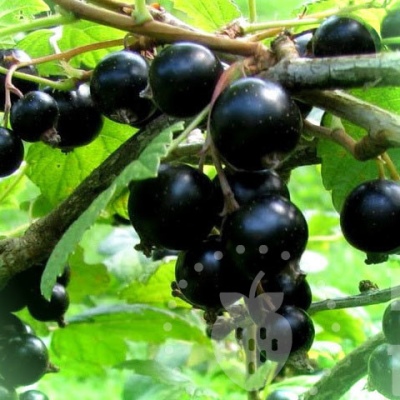
- Authors: Ilyin V.S., Ilyina N.A. (FGBNU Ural Federal Agrarian Research Center of the Ural Branch of the Russian Academy of Sciences)
- Appeared when crossing: Seedling of Dovewing x Bradthorpe (Karelian)
- Year of approval: 2008
- Ripening terms: mid-early
- Growth type: medium-sized
- Yield: high
- Appointment: universal
- Berry weight, g: 1,9-5
- Tasting assessment: 5
- Escapes: medium, curved, green
The romantic name of this currant variety gives hope for the best result. But only with a careful and careful approach can the optimal result be guaranteed. And a very important role is played by accurate, objective information about the characteristics of the Sibylla variety.
Breeding history
The culture was created in the research center of the Ural branch of the Russian Academy of Sciences. Sibylla was obtained under the guidance of breeders N. A. Ilyina and V. S. Ilyin. The seedling of Golubki and Bradthorpe (Karelian) was used as a starting material for hybridization. A new variety of berry bushes was officially registered in 2008.
Description of the variety
Sibylla is a bright representative of the category of black currant. It has a universal purpose. This culture is characterized by medium height. Medium spreading bushes grow up to 1.3 m. Medium-sized green shoots are noticeably bent. Other features:
foliage is colored green or light green;
leaves are soft, wrinkled, with a concave plate;
moderately large white flowers;
single green, non-pubescent racemes 4-6 cm long.
Characteristics of berries
Sibylla fruits are colored in an almost pure black tone. They are characterized by a very large size. The mass can vary widely from 1.9 to 5 g. Rounded berries are moderately rich in seeds and have a glossy sheen. They can confidently challenge the vast majority of other varieties of this bush.
Taste qualities
The smooth skin has no effect on the perceived taste. A pleasant sweet-sour ensemble is celebrated. The number of seeds is moderately high. The yellow-green pulp is juicy. Basic tasting score - 5 points.
Ripening and fruiting
Sibilla currant belongs to the mid-early varieties. Under favorable conditions, the berries can be removed at the beginning of July. With less favorable - you have to wait about the middle of the month. What is important, the variety is also distinguished by its high early maturity.

Yield
Average harvest is from 2.8 to 3 kg per 1 bush. In terms of 1 hectare, this figure will be 4.3 tons. The highest recorded productivity is 12.5 tons per 1 hectare. It must be understood that all this strongly depends on the specific growing conditions and on the diligence of the farmers.
Growing regions
Planting such a plant is possible both in the center of Russia and in the Far East. Therefore, we can confidently say that it is suitable for areas with a moderately severe climatic regime.The increased winter hardiness of this culture is also noted in the official description.
Landing
High resistance to cold weather allows Sibylla to be planted immediately after the snow melts. They start working in different regions in April or May. In professional nurseries, the September planting is common. It is advised to prepare the soil in advance, preferably 50-60 days before the start of work.
The plot is dug up in advance by 20-25 cm. Humus and other fertilizers are applied for planting. The addition of organic matter is useful. All this is laid out along the marked boundary on the surface of the earth before they begin to dig everything up. Otherwise, there are no nuances.

Growing and care
Sibylla is one of the self-fertile shrubs. It is worth noting that it allows you to resort to mechanized harvesting of fruits. The plant is well protected from diseases and pests. In this case, it will be necessary to protect the culture from anthracnose, septoria and from the invasion of a kidney mite. Before the buds swell, pour boiling water over the bushes. With the onset of a warmer period, chlorine-containing preparations will be required.
Active watering is necessary when forming and pouring berries. The better the irrigation, the better the result. But it is important to eliminate stagnant water and ensure adequate drainage. Sibylla can survive frosts up to 30 degrees and does not require protection. Pruning is very relevant, and the lack of fruit or their low quality is usually provoked by incorrect pruning.
The work is carried out in the spring. It is necessary to cut out all those branches that grow inward, lowering the yield. It is imperative to get rid of old stems and shoots. You can also cut the trunk at the root. It must be taken into account whether the increase was great. With extremely weak development of shoots, the branches should be cut carefully.





Currant is one of the most favorite crops of gardeners, it can be found on almost any personal plot. In order for the currant berries to be tasty and large, and the bush itself to be healthy and strong, you should properly care for, treat and protect the plant from harmful insects. It is important to recognize the signs of the disease in a timely manner and begin treatment in the early stages of plant damage.










































































